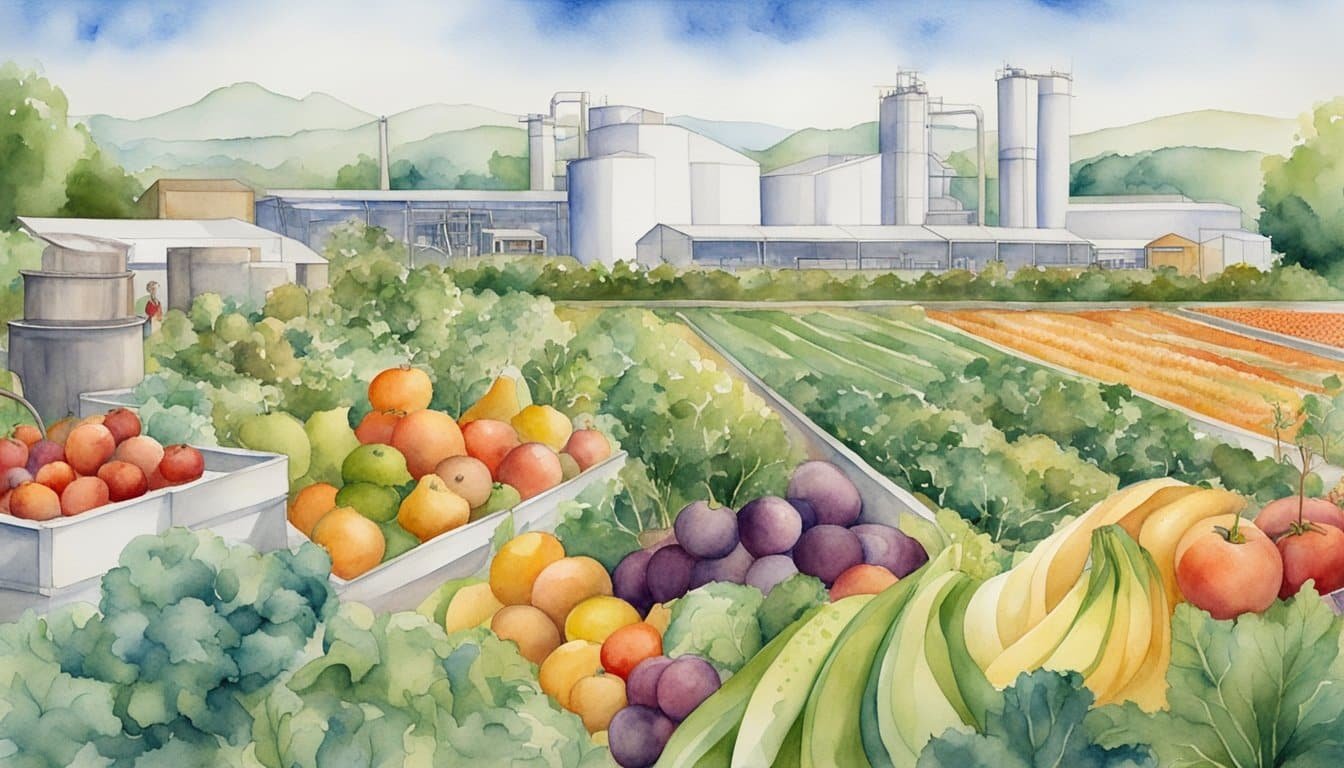Ancestral Diet and Evolution of Eating Habits
Tracing the journey from our earliest ancestors to modern Homo sapiens unveils significant shifts in dietary patterns, shaped by evolution and environmental changes.
From Apes to Homo Erectus
Initially, the diet of early apes, our distant forebears, consisted predominantly of plants and fruits, with insects and small prey supplementing their intake. As evolution marched on, a pivotal shift occurred with Homo erectus. This ancestor demonstrated a notable turn towards a more varied diet. Tools and evidence suggest that Homo erectus began to exploit new food sources like meat, which was a game-changer for human nutrition and brain development.
Hunter-Gatherers and the Paleo Diet
Leap forward to the hunter-gatherers, and you’d find a diet well-attuned to the lands they roamed. This Paleo lifestyle, an echo of our foraging ancestors, involved a broad spectrum of nuts, fruits, lean meats, and seafood. They ate what the earth provided, in sync with nature’s cycles and their immediate environment.
Their diverse diet and active lifestyle reflect a way of eating that many today believe could still hold the key to better health, hence the emergence of the modern Paleolithic, or “Paleo” diet. Through the consumption of minimally processed foods, the emphasis is on mimicking the nutritional patterns of our hunter-gatherer ancestors.
Nutritional Considerations for Modern Humans

When exploring the optimal diet for modern humans, it’s crucial to consider the balance of nutrients and the impact of contemporary eating habits on health. With a myriad of dietary options, understanding these key elements helps in making informed choices for long-term well-being.
Balancing Macronutrients and Micronutrients
Macronutrients, which include proteins, carbohydrates, and fats, are essential for the body’s energy and structural needs. Proteins, found abundantly in both animal and plant-based diet options such as nuts and legumes, are vital for tissue repair and enzyme functions. Carbohydrates, present in fruits and vegetables, offer fuel for daily activities, while fats provide long-term energy storage and aid in nutrient absorption. Conversely, micronutrients such as vitamin C, vitamins B12, calcium, and other minerals are required in smaller quantities but are no less essential for maintaining health and preventing aging.
- Fruits and berries: High in vitamins, especially vitamin C, and fiber.
- Vegetables: Rich in minerals and essential enzymes.
- Nuts: A source of healthy fats and proteins.
Healthy eating practices encourage a balance between these groups, emphasizing a variety of foods to cover all nutritional bases.
Health Risks Associated with Modern Diets
Modern diets, often high in calorie-dense processed foods, can contribute to a range of health issues, including obesity, diabetes, and metabolic syndrome. These diets may lead to an excessive intake of cholesterol, particularly from red meat, which is associated with an increased risk of heart disease.
- Red meat: Linked with higher cholesterol levels and increased risk of heart disease.
- Calorie-dense foods: Tend to promote obesity and diabetes.
Educating oneself about the risks connected with certain foods can steer individuals toward healthier choices, as discussed in The origins of human diet and medicine: Chemical ecology.
Plant-Based Diets vs Meat Consumption
The debate between plant-based diets and meat consumption is ongoing. Plant-based diets, which are rich in fruits, vegetables, and other plant foods, provide a high content of beneficial nutrients while typically being lower in calories and harmful fats. This diet type has been linked with a lower incidence of chronic diseases and may support longer lifespans. On the other hand, while eating meat provides protein and vitamin B12, overconsumption can lead to adverse health outcomes.
- Plant foods: Often contain a diverse range of enzymes and minerals.
- Meat consumption: Supplies protein and vitamin B12 but should be balanced with plant foods to prevent diet-related diseases.
Inclusion of various plant foods is advantageous for health and can be complemented with moderate meat consumption to ensure protein and vitamin B12 intake, as showcased in Biochemical, physiological, and molecular aspects of human nutrition – E-book.
The Role of Food Processing and Lifestyle

The transformation from raw ingredients to tasty meals has left an imprint on human health and the environment. This section explores how different stages of societal development and food processing techniques have shaped modern eating habits.
Cooking and Its Impact on Nutrition
Cooking food has been a revolutionary step since the Stone Age, improving the digestibility and nutritional value of many ingredients. For example, by cooking beans and legumes, their proteins become more accessible, and the risk of ingesting certain toxins is reduced. Cooking also helps in the breakdown of complex carbohydrates, making energy more readily available. Moreover, the act of cooking enhances the flavor of food, which in turn has influenced the human palate, affecting the size and function of our jaws and molars compared to our ancestors.
The Shift to Agricultural Society
The transition from a hunting and gathering lifestyle to an agricultural society has massively changed the human diet. The incorporation of cereal grains as staple foods provided a stable source of energy that was crucial for the development of civilizations. However, this shift has led to a diet that is high in calories and low in nutrition for many modern societies. Additionally, the mechanization of food processing meant that foods could be preserved for longer, leading to an increased consumption of processed meats, sugar, and salt.
Ethical and Environmental Considerations
The ethical and environmental impacts of food choices are increasingly influencing diets. Concerns over animal welfare and the ecological footprints of meat production have encouraged many to adopt a vegetarian or vegan lifestyle. Vegetarian diets, richer in antioxidants and beneficial compounds, have shown numerous health benefits. Similarly, the consumption of fish, which is a key source of omega-3 fatty acids, has been linked to improved brain health. These ethical and environmental considerations are reshaping modern diets towards more sustainable and health-conscious choices.

